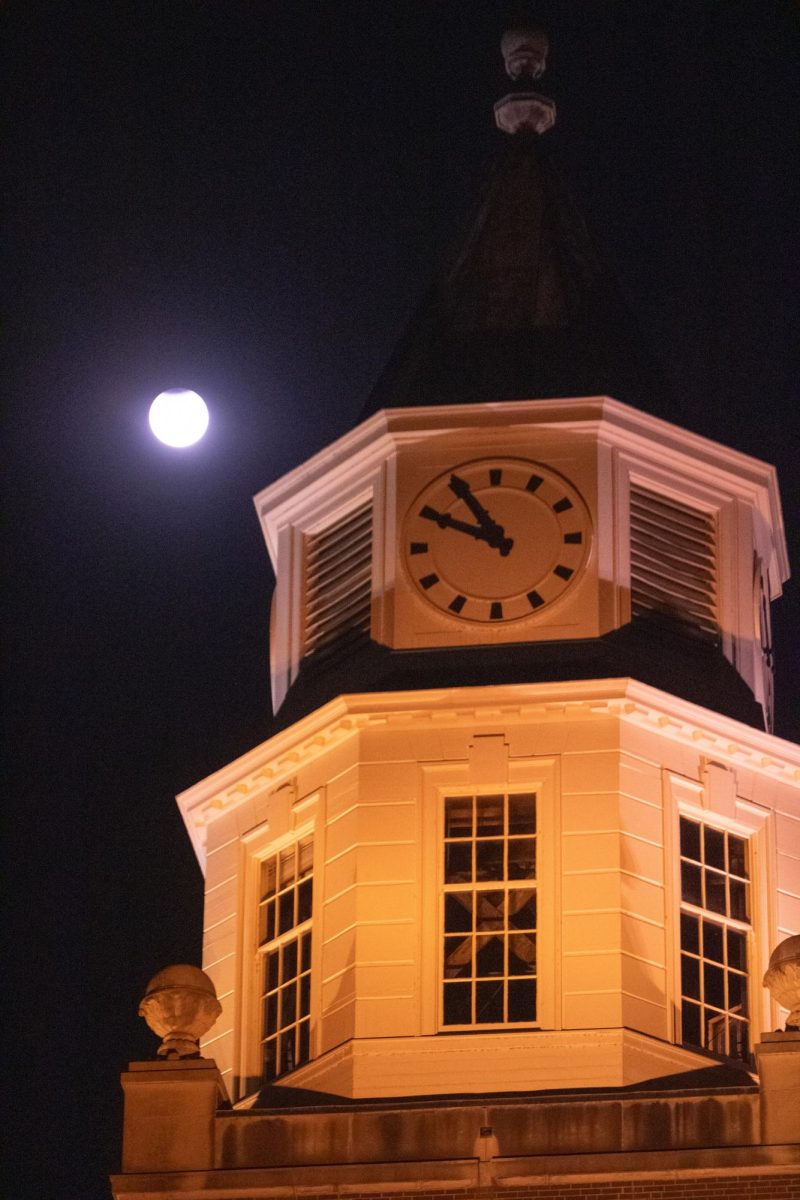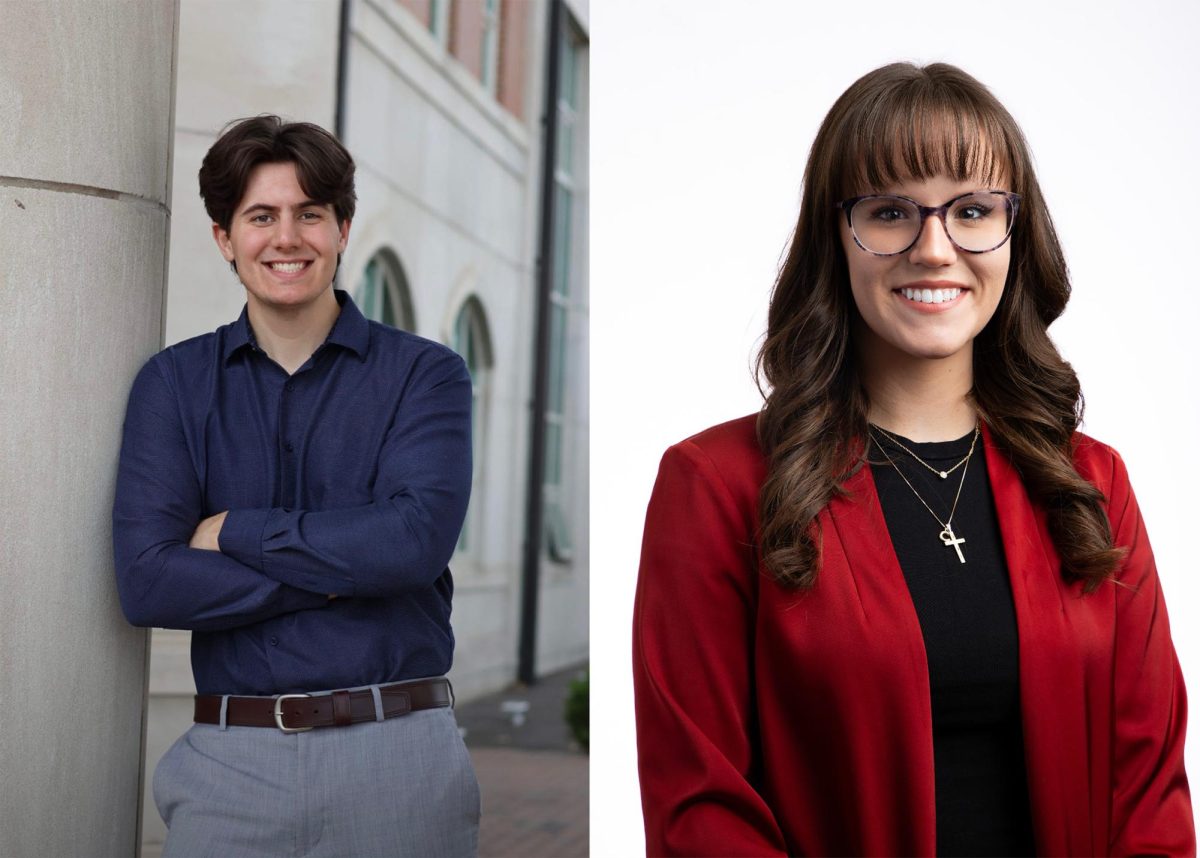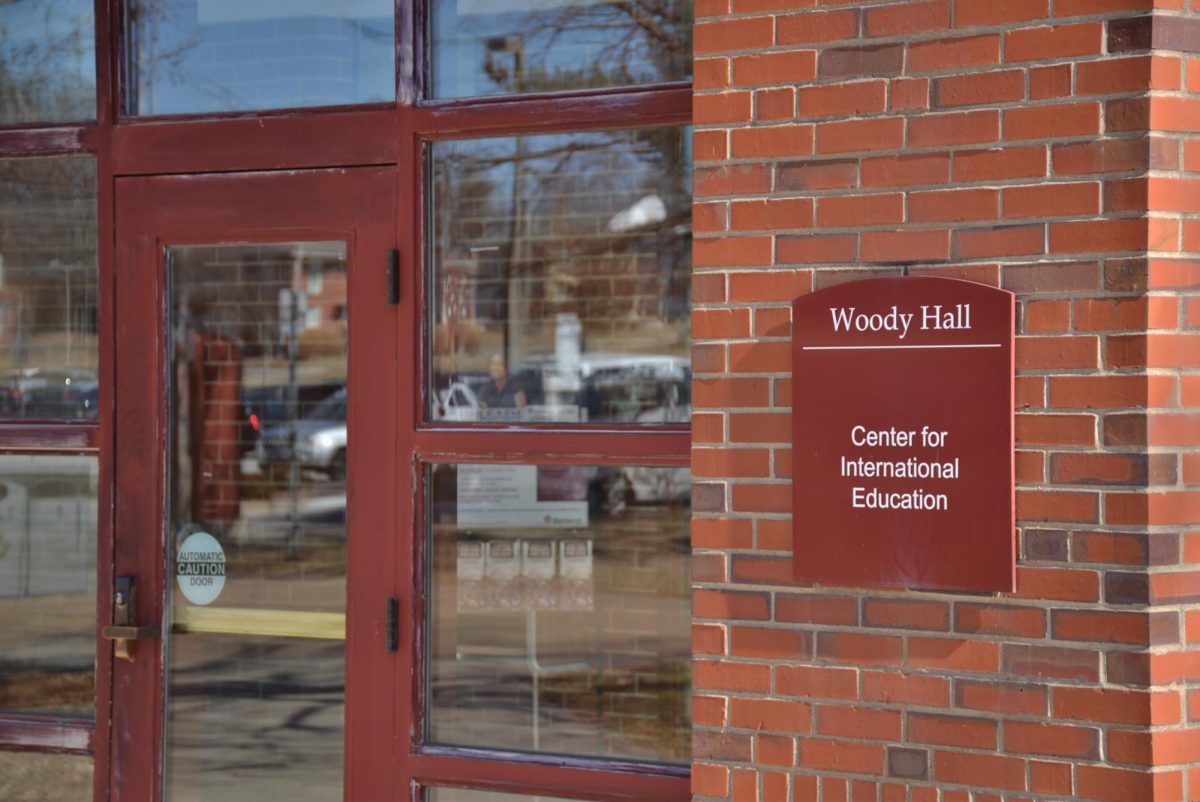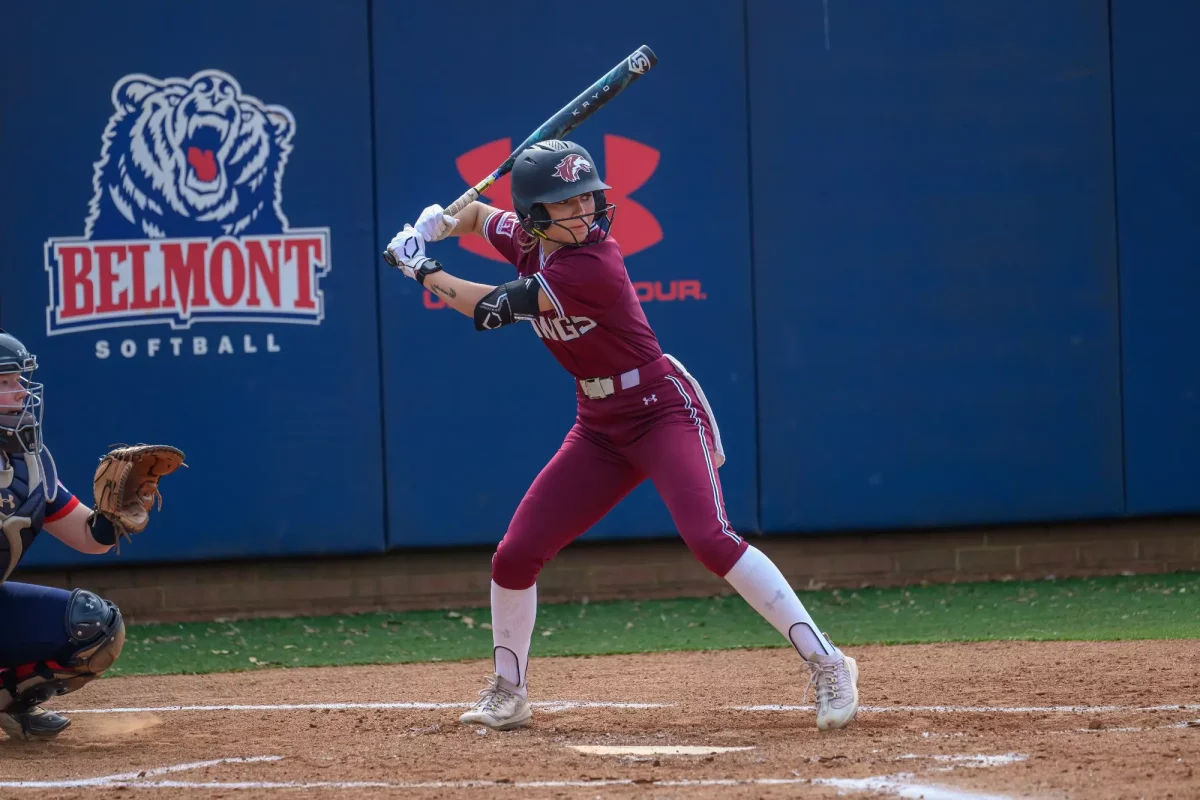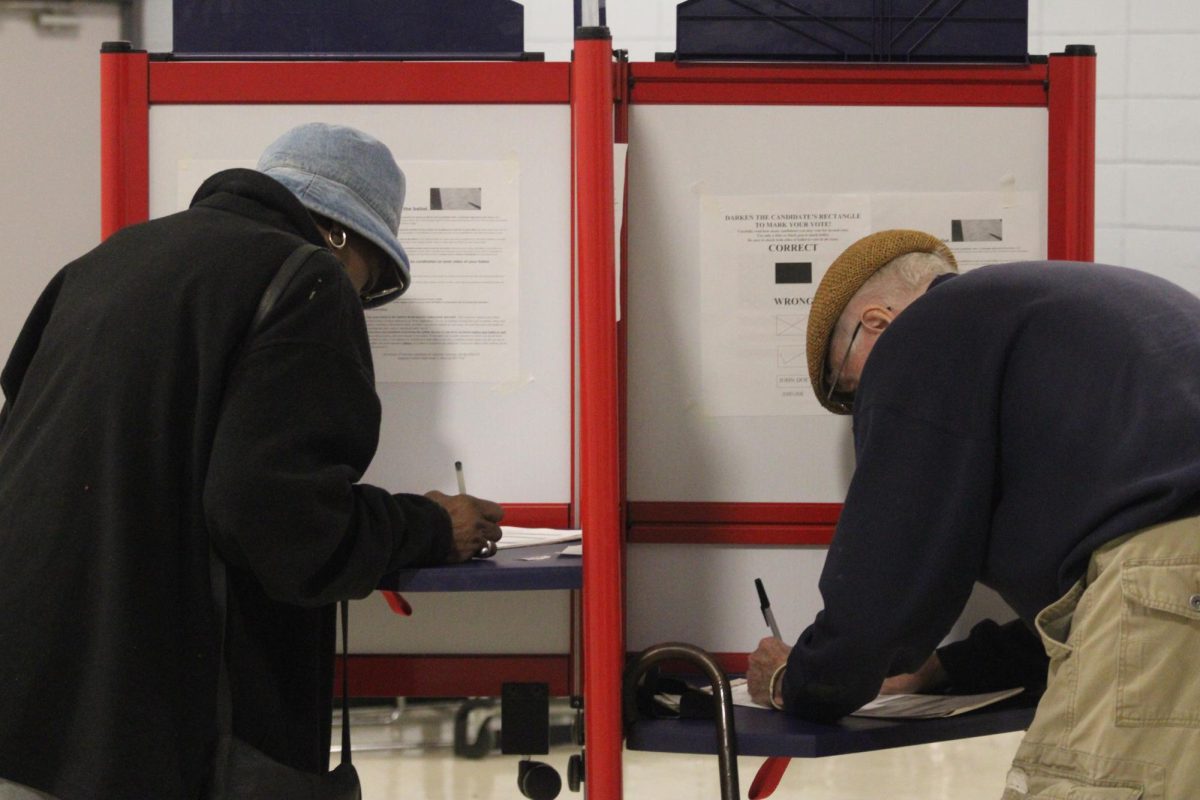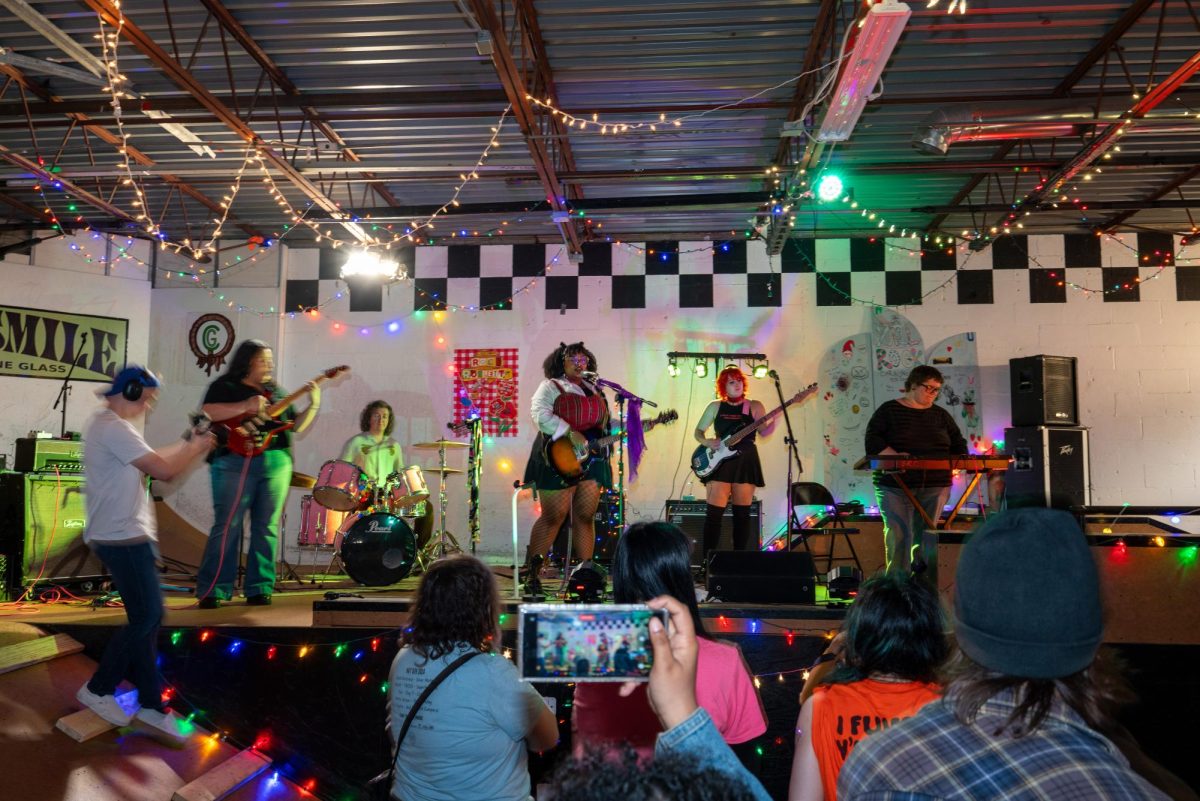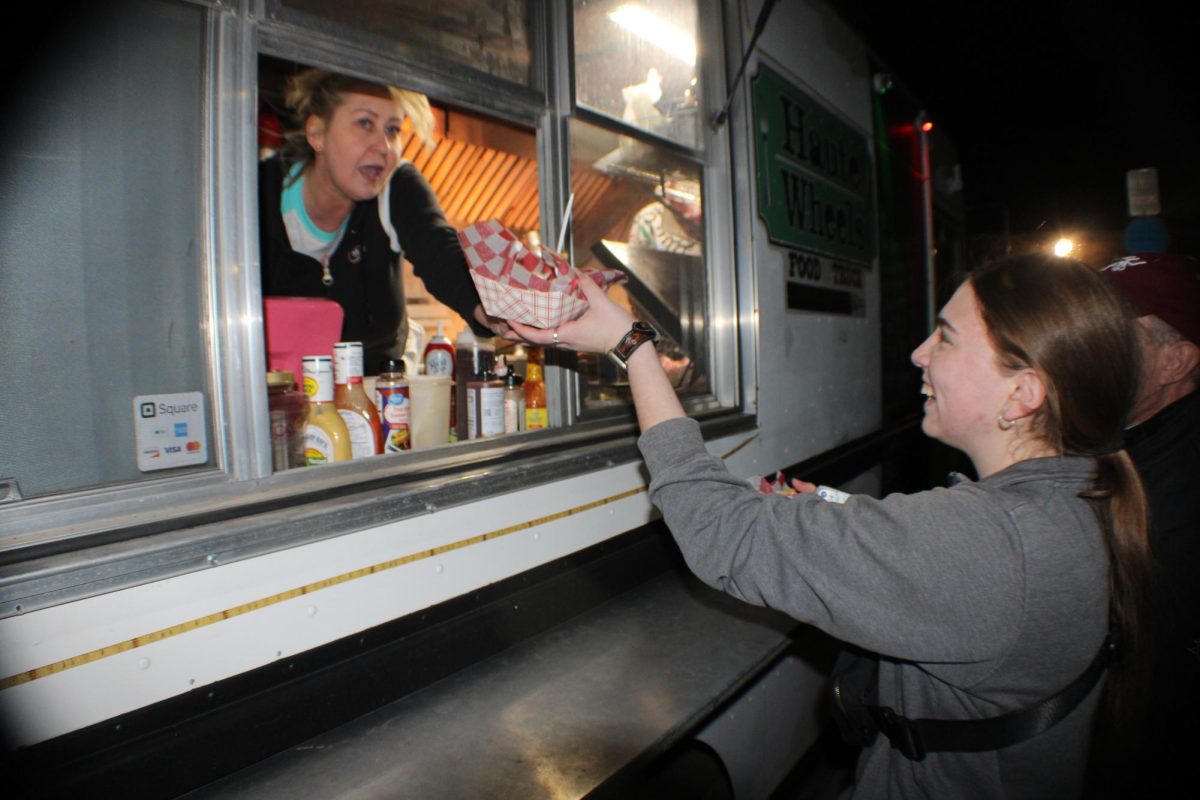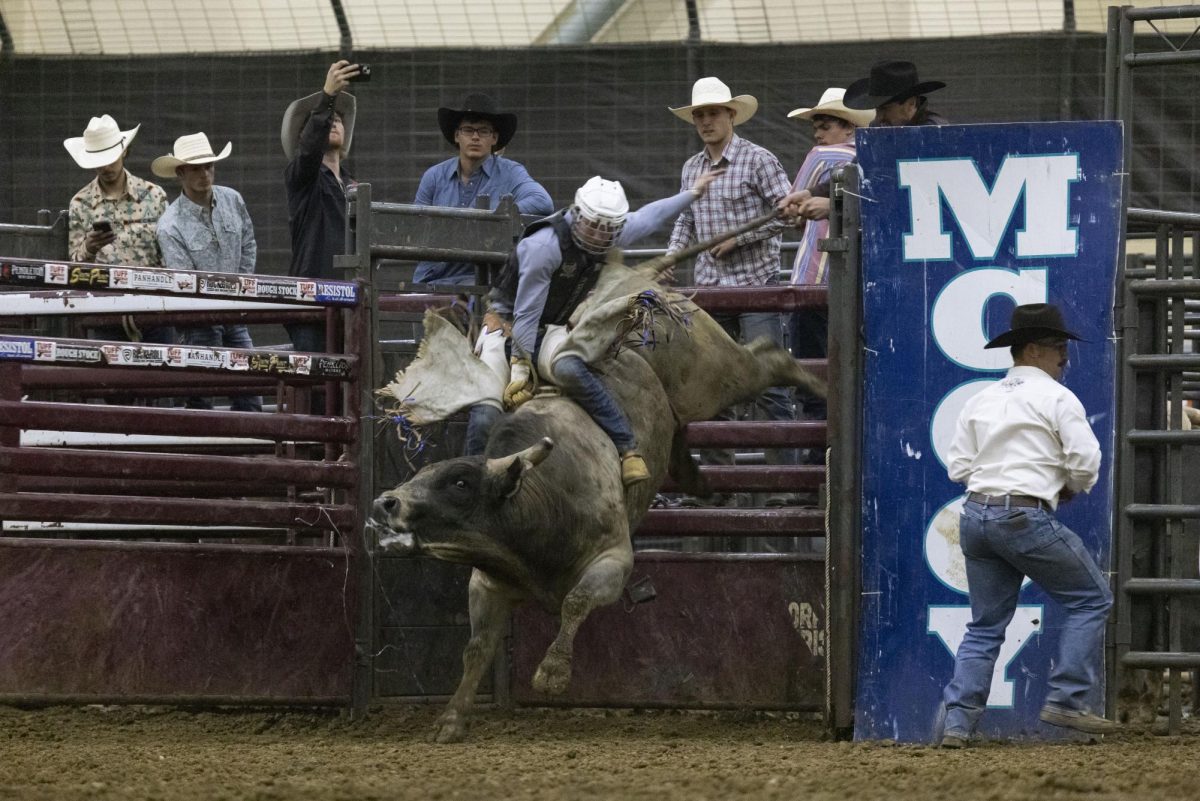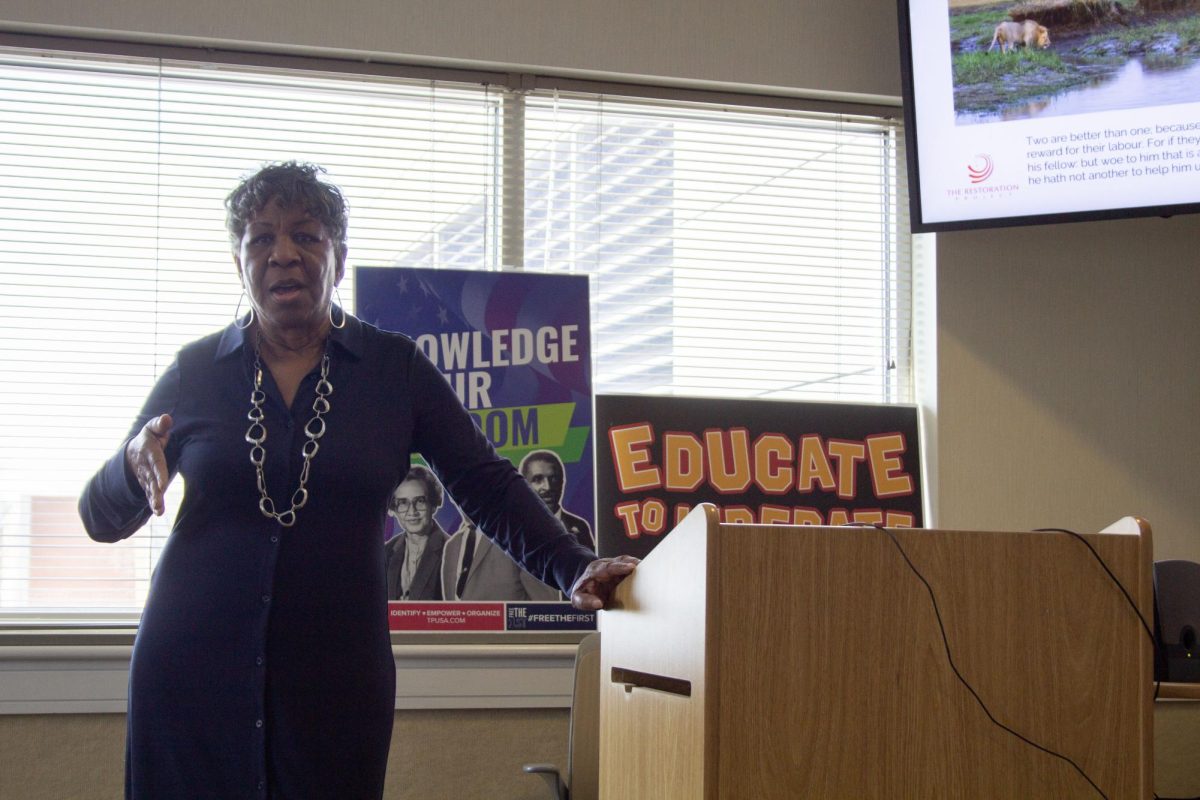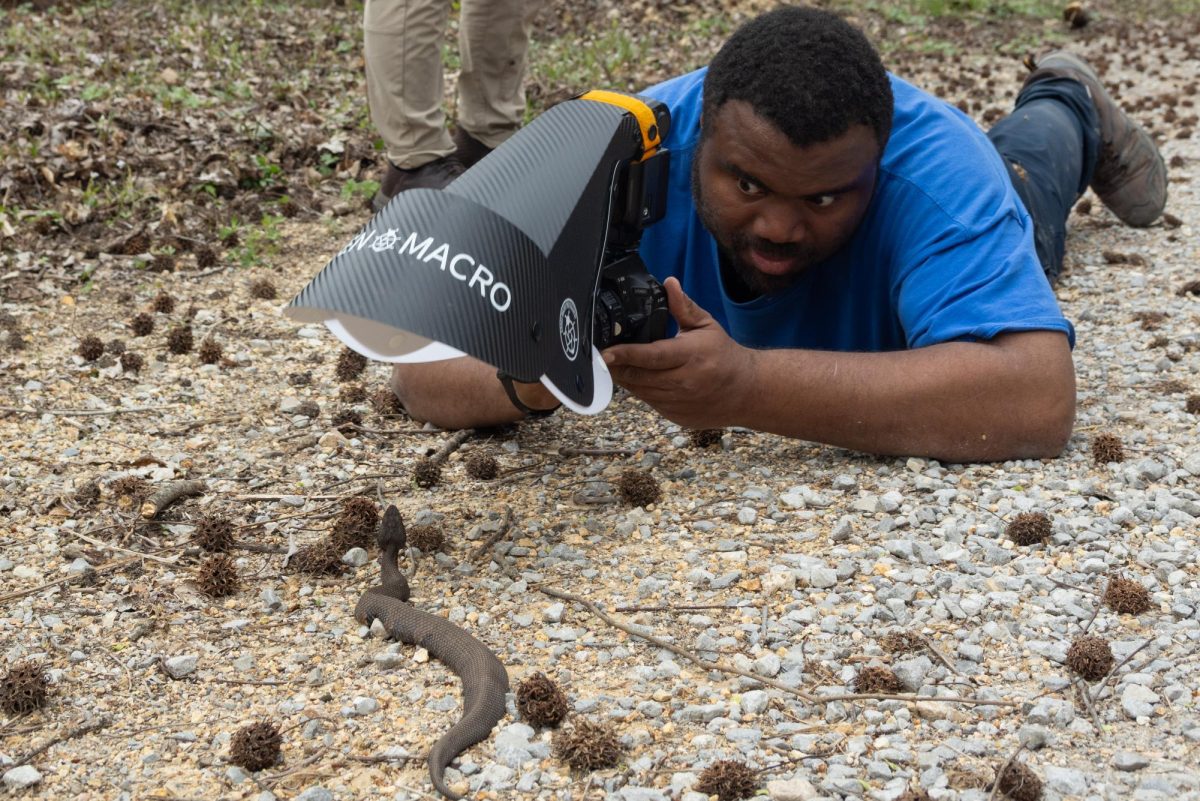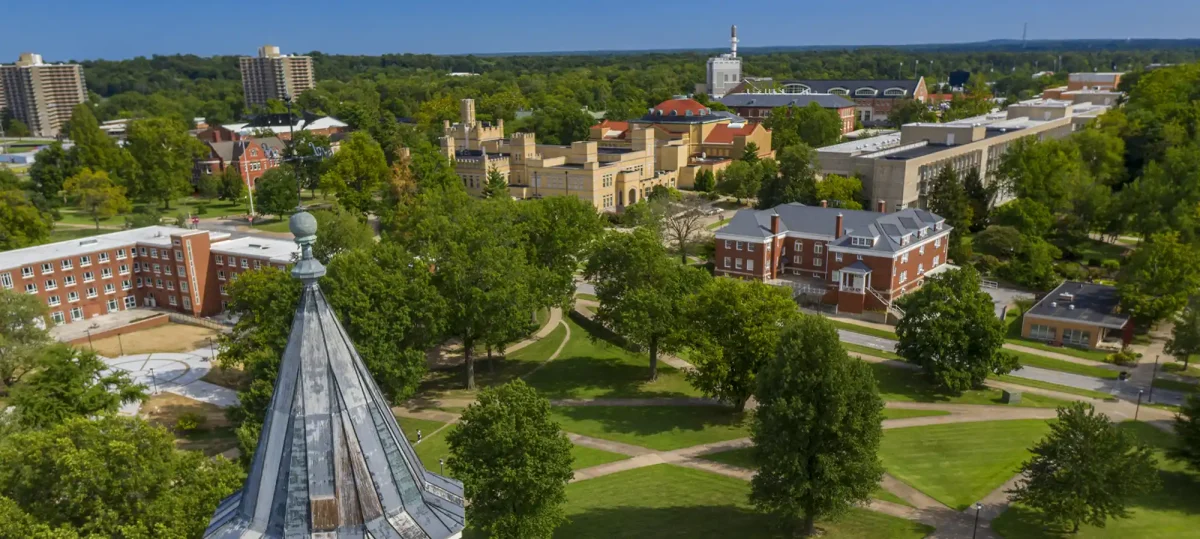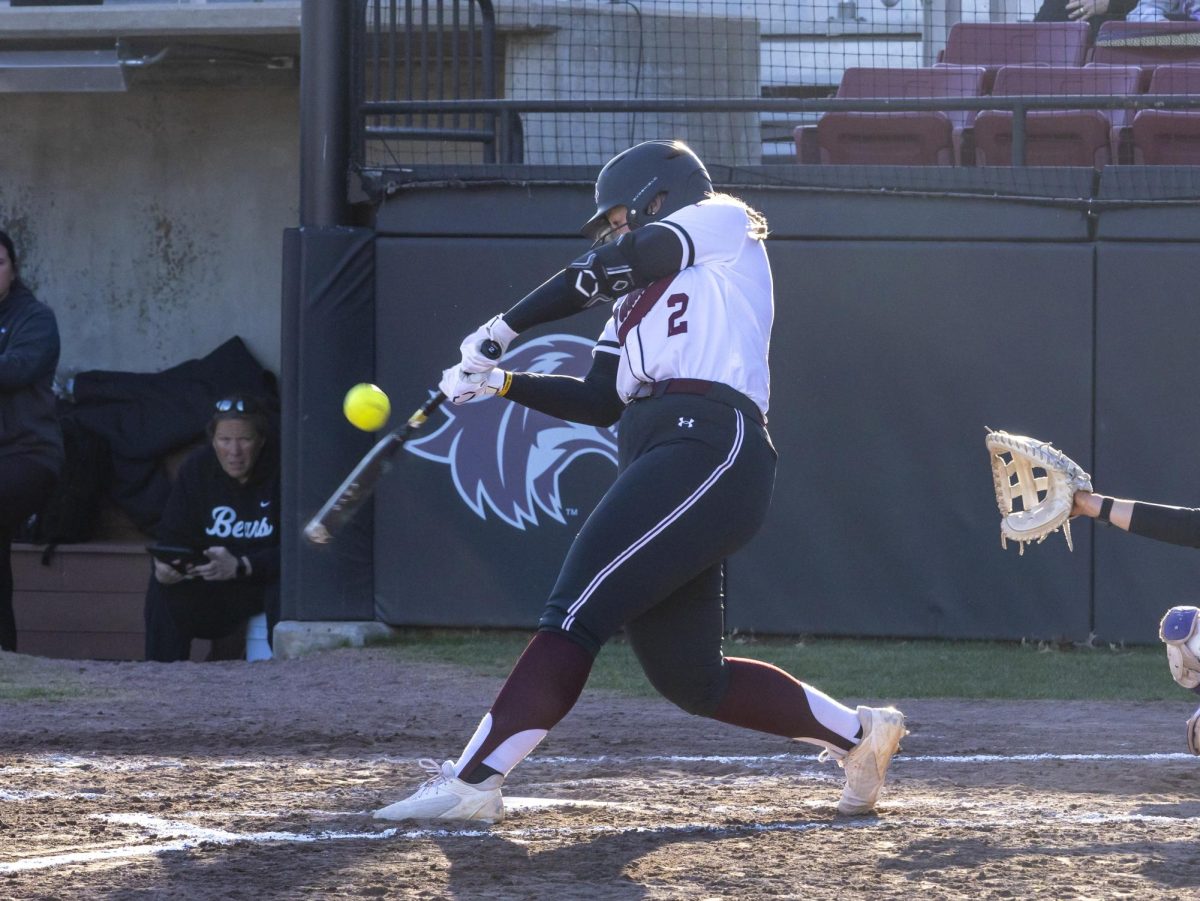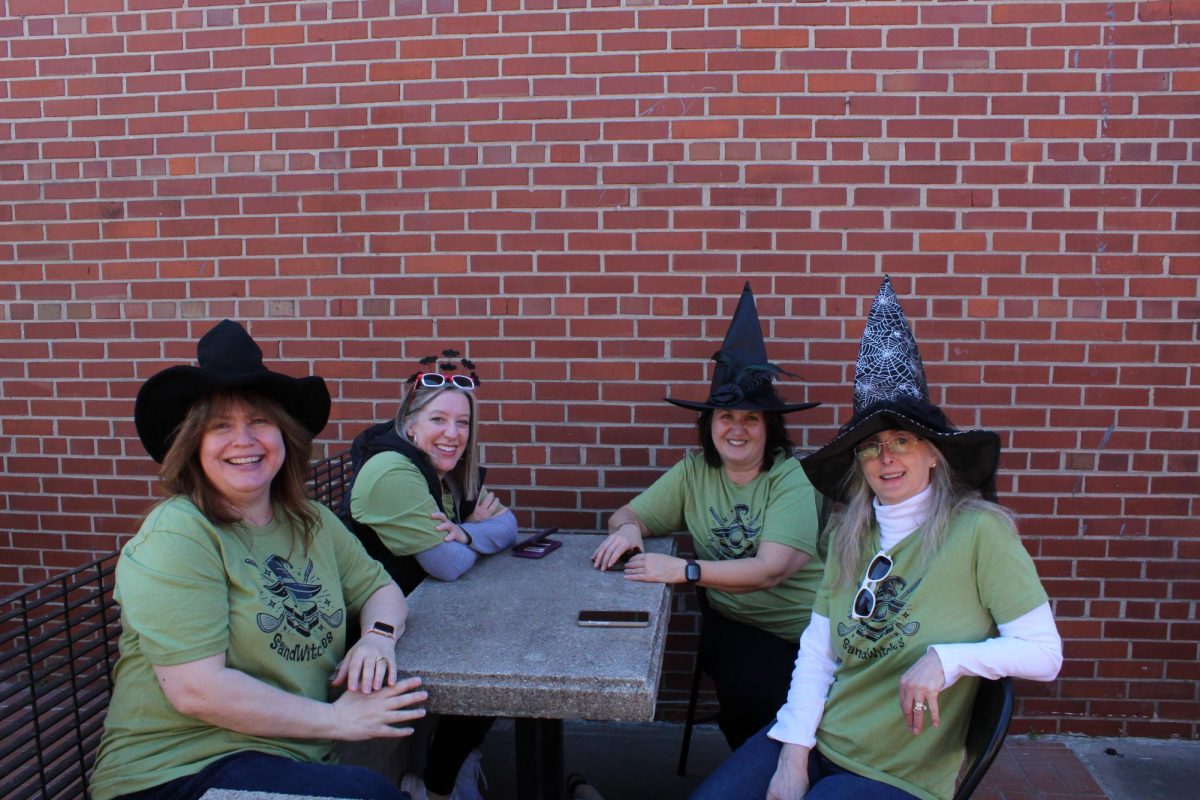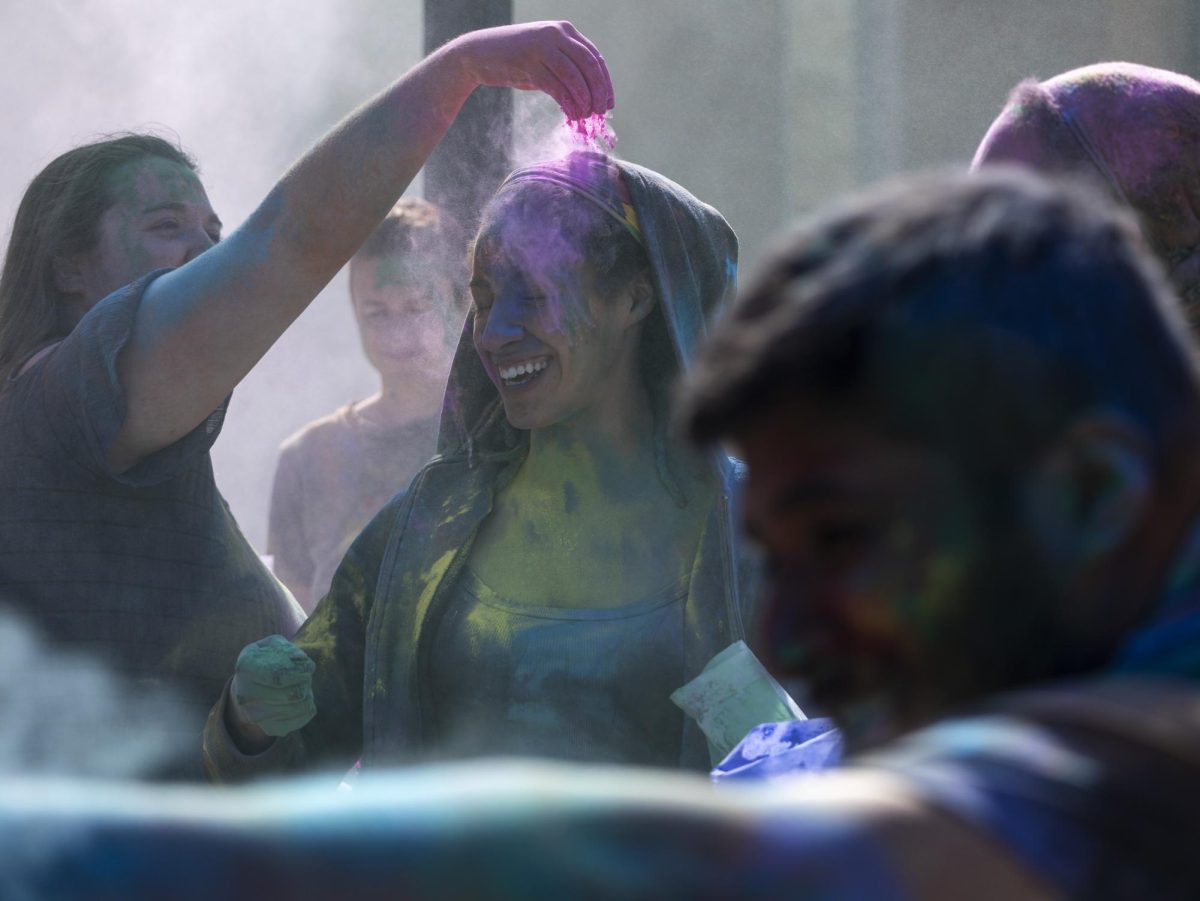Tuesday night, students and community members gathered on the rooftop of Neckers for an astronomy event hosted by SIU’s School of Physics. The event featured a partial lunar eclipse, providing attendees the opportunity to see the moon and planets like Saturn through high-powered telescopes.
The free public observation drew a crowd eager to experience the celestial show.
Advertisement
Corinne Brevik, associate professor in the School of Physics, said, “People are always interested in astronomy. What this does is just give an opportunity for those who have the interest to have a chance to see what’s out there, and an eclipse is a great one, because you don’t even need the telescope to see it.”
The observation featured a partial lunar eclipse that was visible from 9:13-10:15 p.m. During this time, the moon transitioned from full to slightly obscured by Earth’s shadow, with maximum obscuration occurring at 9:46 p.m., affecting only a small portion of the lunar surface.
Keyann Wilson, a senior majoring in criminal justice, said, “It is open for everybody. It’s so easy to access. You’re learning, everyone is involved. You’re not just looking at the sky, but you know what you’re looking at.”
Advertisement*
The observation deck had a slideshow presentation providing information about the night sky and the objects being observed. There was also a table with astrophotography equipment for people to interact with, along with two telescopes available for public use: one focused on the moon and one on Saturn.
“Experience has been great,” Wilson said. “I love this setup with the information on the board and them pointing out what you’re looking at. I’m excited to see the partial eclipse. I’ve never seen one before, never seen Saturn through a telescope. It’s a great experience that you can’t get on an everyday basis.”
The crowd’s curiosity was met with guidance from volunteers and faculty members, who helped point out constellations and planetary features.
Wilson said, “I learned about Saturn’s rings disappearing because of its rotation, and I learned about the constellation of Swan. I never knew about that before tonight. That’s very, very cool.”
For many attendees, this was a chance to engage with the night sky in a way they hadn’t before. Deaira Swanson, a sophomore majoring in accounting, reflected on her newfound passion for astronomy.
She said, “I took Dr. Brevik’s class last semester in astronomy class, and it made me interested in astronomy, just looking up at the stars, and it’s humbling just to be involved in it all.”
Swanson also said that these events provide a valuable opportunity for people to connect with nature and each other.
“I think these events are very beneficial for a lot of people. A lot of people don’t even think to look up at the stars, too tunnel vision on what they’re doing. So we just take the time to look up and appreciate everything above us,” Swanson said.
While many participants were first-time attendees, third-year physics major Demetrius Smith offered insight into the importance of these events for public engagement.
Smith said, “I think there was a big disconnect between the public and scientific domain, mostly because people hear ‘science’ and think it can be overwhelming, it can be complex, they wouldn’t understand it. So events like these do a great deal to help public outreach.”
He said astronomy is for everyone, not just for scientists or those in academia.
“People have been doing astronomy since the dawn of civilization. They’re probably going to continue to do it going into the next couple of years. So I say it does a lot to just get interest in astronomy higher than it already is,” Smith said.
Throughout the night, professors and volunteers shared their knowledge, helping attendees make connections between what they were seeing and the broader context of astronomy.
“As far as guidance, we got more context about what we were looking at. But visuals speak for themselves,” Smith said. “The camera or the telescopes are pretty good quality, so you’re able to see a lot, especially some of these bigger ones, you can see the details on the moon.”
Brevik shared her enthusiasm for both teaching and bringing astronomy to the community.
“We do monthly astronomy events, even when we’re not having an eclipse, but when we’re having special astronomical events, we like to do extra activities,” Brevik said. “The goal is to share what we’re seeing — there’s some amazing stuffing happening up there. We’d like people to get a chance to look at it, ask questions.”
Each event offers the chance to explore different celestial phenomena, keeping the experience new and engaging for attendees.
Brevik said, “When we don’t have a moon, and it’s really dark, then we will look at the deep sky objects like galaxies and Nebula. On nights like this though, we’re looking primarily at the planets and the moon. But it’s always fun to let people who’ve never seen these things before have an opportunity to see them through the telescope.”
Many participants said they leave events with a renewed perspective on the night sky. Whether it was their first time looking through a telescope or revisiting a long-held interest, each event celebrates the ongoing exploration of the universe beyond Earth.
Tuesday’s observation may have been a highlight of the fall schedule, but there is another event on the horizon for local stargazers.
“We have a community star party coming up during fall break,” Brevik said. “It’s out at the SIU farms, and it’s a great event to bring family to. We’ll have a whole field of telescopes, food trucks, hands-on activities, and speakers. It’s definitely the big event of the fall.”
Unlike the smaller events on the Neckers rooftop, the annual Southern Illinois Star Party offers a much larger space for participants and darker skies, which will improve viewing.
“Campus is fine, but the viewing out there is better and it’s a bigger area,” Brevik said. “We’re kind of limited on how many people can be up here. We usually have several hundred people at that event, and then we also live stream that event if someone can’t be here.”
This year’s Star Party will take place on Saturday, Oct. 19, from 4:00-10:30 p.m. at the University Farms Astronomy Observation Area, located 2 miles west of SIU’s main campus.
Participants will have access to several telescopes operated by amateur astronomers and SIU faculty, staff and students, allowing them to observe the sun, moon, and planets like Saturn and Jupiter. Visitors are encouraged to bring their own lawn chairs and blankets, and food and soft drinks will be available for purchase. Free shuttles will operate from SIU Parking Lot #63.
“I think we’d love people to enjoy what they are seeing and find it interesting,” Brevik said. “I think it’s important that people realize that we have an astronomy program as part of physics here at SIU, and we have a whole bunch of events happening. So part of it, too, is just helping people realize there are more of these coming up.”
For more information on upcoming astronomy events, visit SIU’s School of Physics website.
Advertisement



